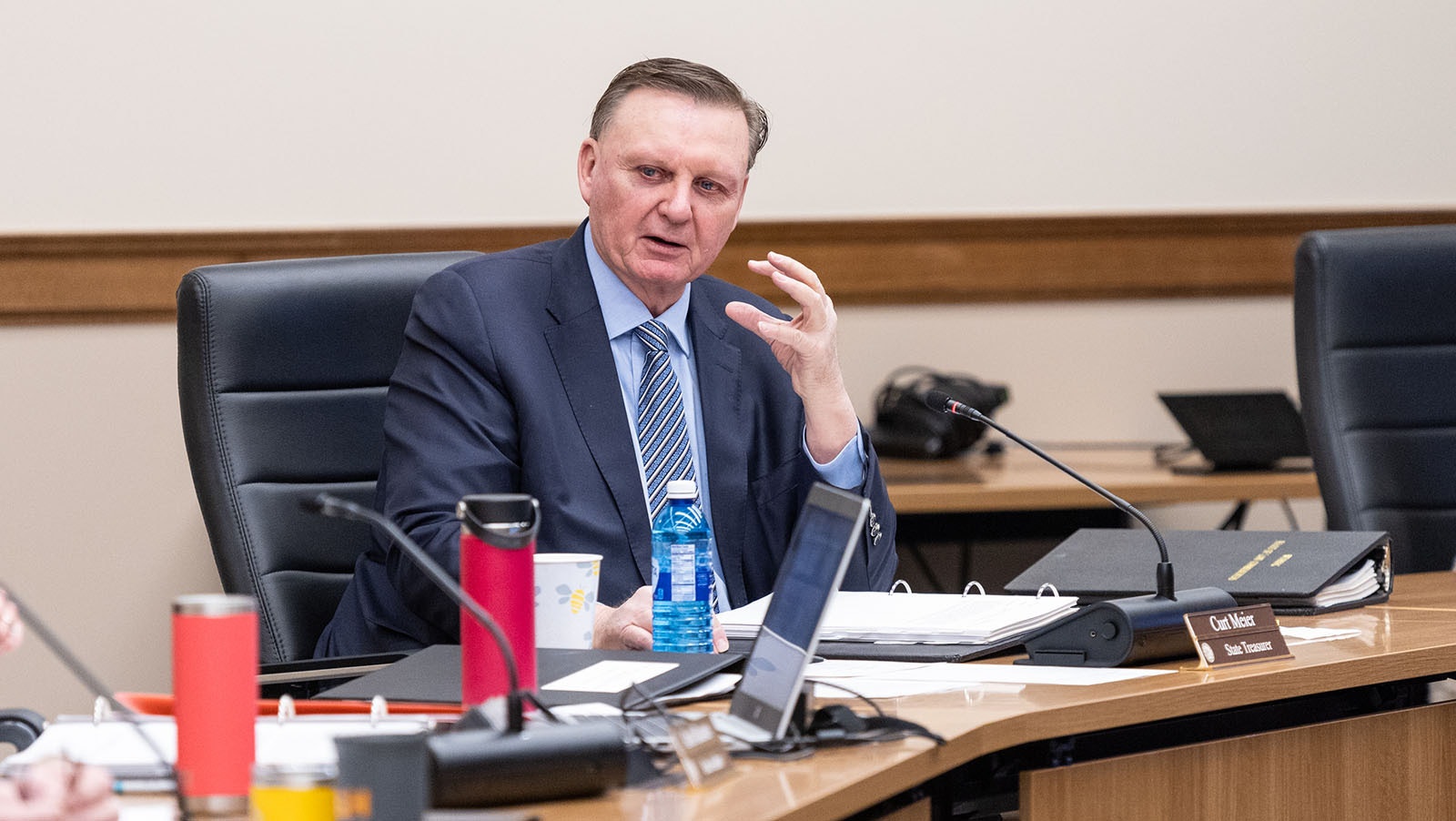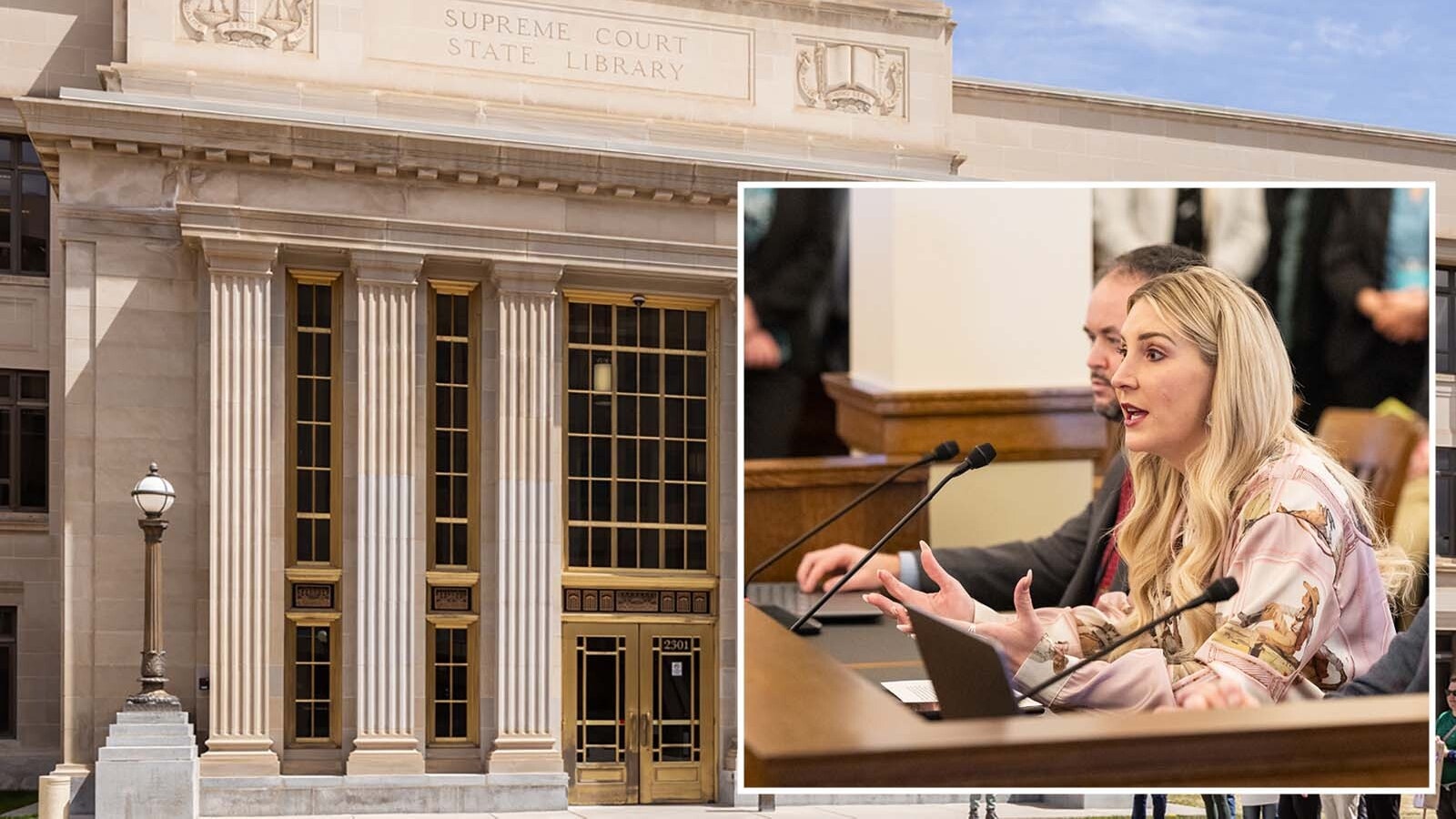Natrona County Commission Chairman Steven Freel was so concerned about the financial vulnerability his county faced by staying in the WYO-STAR II local government investment pool that he was willing to sacrifice about $3.5 million to get out.
Natrona had $98 million in the account, roughly 40% of the total fund, which means Natrona County gave up about 3.6% of its investment to get out of the fund.
Year-to-date, the WYO-STAR II account has lost $198 million in market value, more than half of its total value from a year before. As of June 30, $117 million remained of the $259 million balance it had a year prior, a drop of nearly 55%.
Freel described the move as avoiding putting all of the county’s eggs into one basket. Also, the WYO-STAR II account wasn’t performing, he said.
“I’d rather explain that kind of loss to my constituents than waiting until it all runs out,” Freel said. “If there was a run or something happened to that account, we’d lose everything.”
The Natrona move has become a part of a larger run on the account. The State Treasurer’s office reported to Cowboy State Daily that seven participants have fully liquidated their investments out of the WYO-STAR II account in the past three months. As of June 30, 43 members remained.
Cheyenne City Treasurer Robin Lockman said her city pulled nearly all of its $5.5 million from the account in April.
A Mini Run
The fall of First Republic, Silicon Valley and Signature banks this spring happened as a result of customers pulling money from them. A bank run happens when they withdraw their money at the same time over fears about the bank's solvency.
WYO-STAR was formed in 1987 as a short-term way for Wyoming governmental entities to pool their money to maximize benefits from investment. In 2016, WYO-STAR II was created as longer-term option with the stipulation of a penalty for early withdrawal, which is what Natrona County’s $3.5 million hit was.
The WYO-STAR II account has had a rough year after posting strong numbers for the 2022 fiscal year, which ended last June 30.
As of last month, the WYO-STAR II account's rate of return was down 43% in June.
While this might seem like a startling drop, Converse County Treasurer Joel Schell said it only resulted in a $9,000 loss for his county off a $2.6 million investment.
In June 2022 alone, the account lost $106 million in market value. Year-to-date, the account has lost $198 million in market value, more than half of its total value from a year before. As of June 30, $117 million remained from the $259 million balance it had a year prior.
Freel said he’s confident Natrona will make back its $3.5 million within the year by putting its money into a new investment pool.
Lockman said Cheyenne has transferred its money into a similarly structured, privately run investment fund.
Piece Of The Pie
The purpose of WYO-STAR II is to pursue a long-term fixed income strategy.
Staff from the State Treasurer’s office make investment decisions for the WYO-STAR II account and have a fiduciary responsibility to represent those investing in the account to the best of their ability. Investment firm J.P. Morgan is the custodian of the securities.
The National Government Finance Officers Association asserts that safety, liquidity and yield — in that order — are the most important objectives for investing taxpayer dollars.
The state retained $3.5 million of Natrona’s share when the county pulled its money out.
“They didn’t necessarily get what they put into them and that’s how the bond market works,” State Treasurer Curt Meier said.
Meier pointed out that there are no realized losses in a bond fund until an entity sells its stake. He said if an entity doesn’t understand the bond market, “they probably should leave it up to the professionals.”
Meier said if Natrona County had waited until its bonds reached 100% maturity plus interest, it would have lost nothing.
“If you sell a bond, that’s got a low return in a high-interest rate return, then you’re going to get hit,” Meier said. “It’s just the difference in the value. It’s a pretty simple concept.”
Long-Term Bonds
Many of the investments in WYO-STAR II have long maturities that extend out for three to five years.
According to Investopedia, long-term bonds offer the advantage of a locked-in interest rate over time, but also come with a longevity risk. When investors hold long-term bonds, they become more susceptible to interest rate risk since interest rates potentially increase over a longer period. When this happens, it discounts the value of the bond.
This is the scenario that has happened over the last 18 months nationally, with interest rates drastically increasing as a result of the Federal Reserve attempting to slow down the economy.
When interest rates went up, the market value of the long-term bonds in WYO-STAR II went down.
Meier said he previously advised members of the Wyoming County Commissioners Association to not put large sums of money into WYO-STAR I or II or invest newly earned money. WYO-STAR I hasn’t experienced as severe losses as WYO-STAR II and is considered more liquid.
“WYO-STAR I and II have got a lot of duration drag on it and interest rate drag on it and you’d be better off with a fresh product,” Meier said he told the commissioners.
Surprises
Converse County had a much smaller share of money in the WYO-STAR II account, but also pulled everything it had in the account.
“To me, what’s happening is a mismanagement of the funds,” Schell said.
Schell said his county wasn’t warned by the state when signing up for the investment pool that it would have 10% of its money, a sum of $262,129, withheld by the state in the event it pulled all of it out. The State Treasurer’s office website warns that pool participants are subject to an early withdrawal penalty, but that’s only for a 90-day period.
Converse had its money in the account for five years.
“When we go to pull the money out and use it as intended and they say, ‘Well, you can only get 90% of it,’ that is a problem for us,” Schell said.
Schell said other public investment funds withhold the weighted average maturity of the balance for 30 days. He said those running WYO-STAR II are not paying attention to the liquidity needs of the fund when entities are pulling their money from it.
“They’re having to liquidate investments at a loss in order to get the cash to pay these investors back and all of the participants share in that loss,” Schell said. “If they can’t give me 2% of their assets in cash without taking a significant loss then they’re not managing the fund properly.”
Unlike Natrona and Converse counties, Lockman said the city of Cheyenne got all of the money it asked for back.
As of June 30, WYO-STAR II had $22.69 cash on-hand in the account, meaning the state doesn’t have nearly enough money to cover any more redemptions from local governments. In the event this happens moving forward, the state would be forced to sell off more bonds at a loss to cover the cost of redemption, which would likely result in another negative yield.
Some Risks Were Stated
Meier said Converse County should consider itself lucky for getting 90% back on an immature liquidated bond portfolio.
The treasurer’s website warns that this pool does not have a guaranteed rate of return, and participants expose their investments to market losses as well as gains.
The city of Casper still has about $30 million in the account. As a result of the hit to the account in June when Natrona pulled out, Casper took a loss of $106,185.
Jill Johnson, financial services director for Casper, said the city’s Investment Advisory Committee recommended it reduce its exposure in the WYO-STAR II account.
Johnson said the city plans to withdraw most of its money from the fund in small increments over a longer period of time, “So that it doesn’t cause a negative like we’ve seen from everybody else.”
Schell said whoever becomes the proverbial last man standing in the WYO-STAR II pool stands to suffer the biggest loss of all.
To date, the state still hasn’t posted the WYO-STAR II yields for the month of June. Typically, these numbers come out around the middle of the following month.
Because of the run on the pool, June will likely be the worst month for the fund since at least July 2022, when it produced a 5.7% loss. At that time, the city of Casper lost $303,377.
Meier said he doesn’t know when the numbers will be released.
Katie Smith, chief financial officer for the treasurer’s office, said that since June is the end of the fiscal year, it requires multiple additional processes to be completed outside of a normal month’s end. Smith said yields will be posted as soon as possible.
The Future Of WYO-STAR II
Freel said he doesn’t know what the future of WYO-Star II will look like.
Meier was noncommittal about what he thinks of the short-term future of this account and said local governments have the right to legally pull their funds from it. There are no service fees associated with keeping money in the account.
“They’ll just have to see at the end of the day whether it’s something that works out better for them or not,” he said.
Johnson believes the account does have a future, which is why the city isn’t pulling all of its money from it.
She and Meier said when interest rates go down in a few years, they believe those who have stuck with the fund will receive some higher appreciation on their bonds, which they will then be able to sell for a premium or hold on to them longer.
Leo Wolfson can be reached at leo@cowboystatedaily.com.





